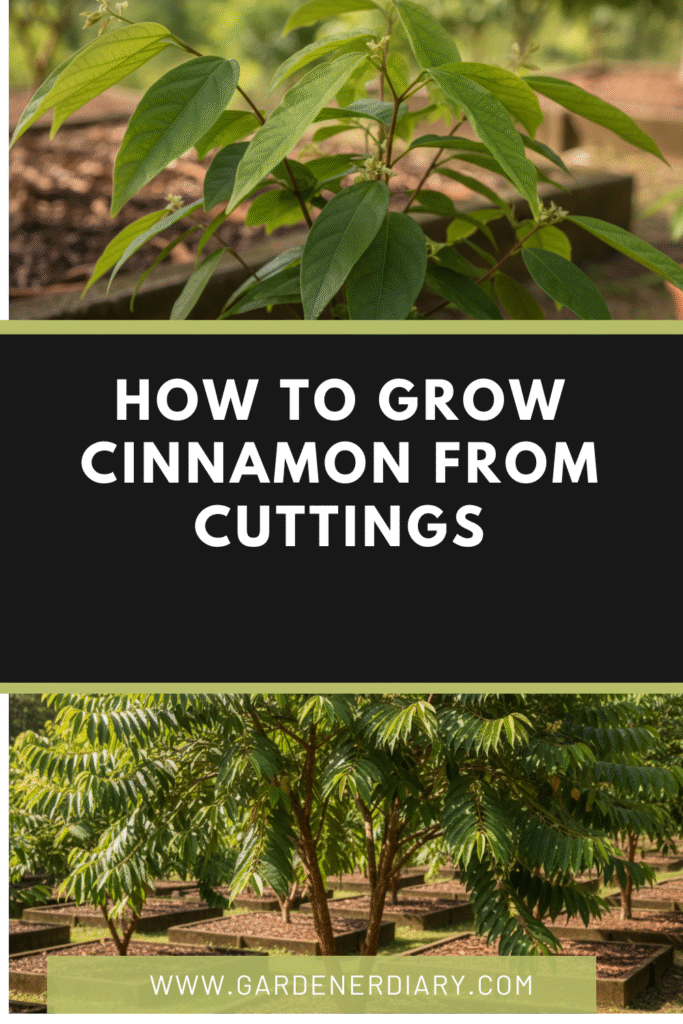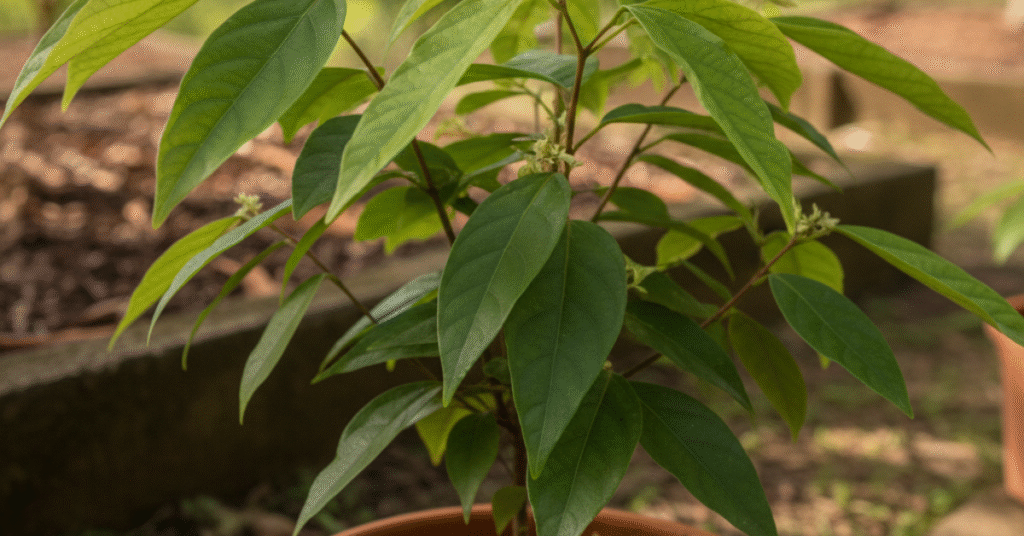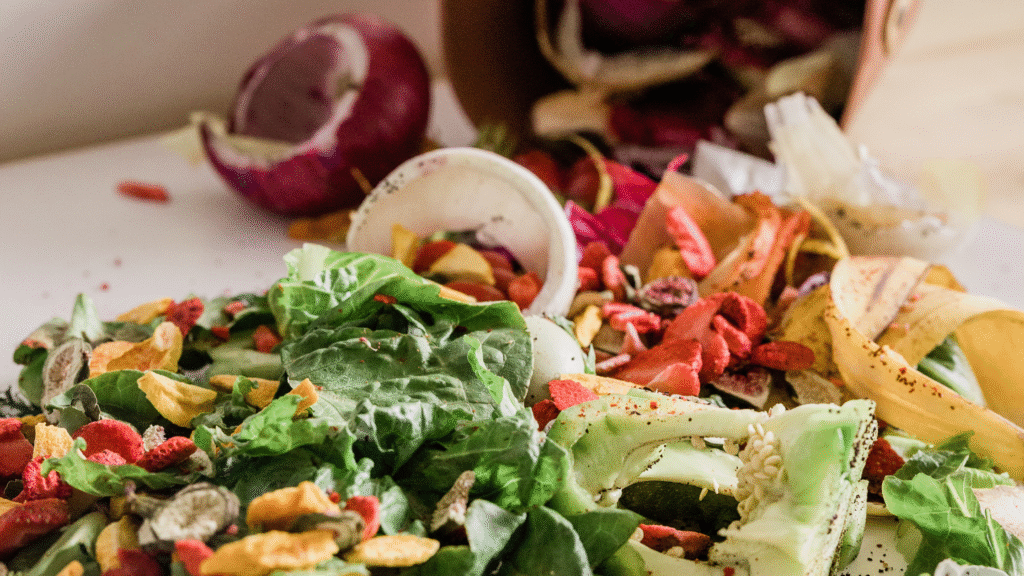Cinnamon is one of the most loved spices in kitchens worldwide. Its warm and sweet flavor makes it a favorite in cooking, baking, and even natural remedies. While many people grow cinnamon from seeds or sticks, another effective method is growing cinnamon from cuttings. This guide explains step-by-step how to grow cinnamon from cuttings, making it easy for both beginners and experienced gardeners.
Quick Comparison: Growing Cinnamon from Seeds vs. Cuttings
| Method | Time to Root | Success Rate | Difficulty Level |
|---|---|---|---|
| Seeds (learn here) | Slow | Moderate | Medium |
| Cuttings | Faster | High (with proper care) | Easy |
Why Grow Cinnamon from Cuttings?
- Faster growth than seeds.
- Higher chance of success with healthy stems.
- Cuttings produce plants identical to the parent tree.
- Cost-effective way to expand your cinnamon garden.
Best Time to Grow Cinnamon from Cuttings
- Late spring to early summer is ideal.
- During this time, stems are actively growing and root more easily.
Materials You Need
- Healthy cinnamon plant for cuttings
- Sharp sterilized pruning shears
- Small pots or containers
- Well-draining potting mix (sand, perlite, and compost)
- Rooting hormone (optional but recommended)
- Plastic bag or humidity dome
- Spray bottle with water
Step-by-Step Guide: How to Grow Cinnamon from Cuttings
1. Select Healthy Cinnamon Stems
- Choose semi-hardwood stems from a mature cinnamon tree.
- Avoid diseased or weak branches.
- Each cutting should be 6–8 inches long.
2. Cut the Stem Properly
- Use sharp shears to make a clean cut below a leaf node.
- Remove lower leaves, leaving 2–3 at the top.
- If the leaves are large, cut them in half to reduce moisture loss.
3. Prepare the Cutting for Planting
- Dip the cut end in rooting hormone (optional).
- This increases the chance of faster root development (study reference).
4. Plant the Cutting
- Fill a small pot with moist, well-draining soil.
- Insert the cutting about 2–3 inches deep.
- Firm the soil gently around the stem.
5. Create a Humid Environment
- Cover the pot with a plastic bag or humidity dome.
- Keep it in bright but indirect sunlight.
- Mist with water to maintain humidity.
6. Care for the Cuttings
- Keep the soil consistently moist but not soggy.
- Open the cover daily for air circulation.
- Roots should develop in 6–8 weeks.
7. Transplanting the Rooted Cutting
- Once roots are strong, move the cutting to a larger pot or garden soil.
- Provide partial shade for the first few weeks.
Caring for Cinnamon Plants Grown from Cuttings
After successful rooting, cinnamon plants need proper care to thrive. Learn more in this complete guide.
1. Soil Requirements
- Cinnamon prefers sandy loam soil.
- Ensure good drainage to avoid root rot.
2. Watering
- Keep soil slightly moist.
- Avoid waterlogging.
3. Sunlight
- Provide bright indirect light if indoors (indoor growing guide).
- Outdoors, cinnamon grows best in partial shade (outdoor growing guide).
4. Fertilization
- Apply organic compost every 2–3 months.
- Balanced NPK fertilizers also work well.
5. Pruning
- Prune dead or weak branches regularly.
- Helps in shaping the plant and encouraging new growth.
Growing Cinnamon in Different Conditions
Growing in Pots
- Cinnamon grows well in containers.
- See detailed steps here: growing cinnamon in pots.
Growing from Sticks in Nigeria
- Some gardeners experiment with using sticks. Learn more here: grow cinnamon from cinnamon sticks in Nigeria.
Time to Harvest
- Cinnamon trees start producing harvestable bark after several years.
- Find details here: how long does it take for a cinnamon tree to produce cinnamon.
Benefits of Growing Cinnamon at Home
- Fresh, chemical-free spice.
- Useful in cooking and baking.
- Cinnamon tea offers several health benefits (read here).
- A natural air purifier for your home garden.
Scientific Research on Cinnamon Propagation
- Studies show soaking seeds in rabbit urine increases viability (source).
- Cuttings respond better when planted in a sandy-perlite mix (research).
- Cinnamon has antioxidant and antimicrobial properties (clinical study).
- It may help in managing blood sugar levels (scientific paper).
Common Mistakes to Avoid
- Overwatering the cuttings.
- Using diseased or weak stems.
- Keeping the cuttings in direct harsh sunlight.
- Not using well-draining soil.
FAQs

How long does cinnamon take to grow?
Cinnamon trees usually take two to three years to establish themselves after planting. However, for the bark to mature enough for harvesting, you will need to wait around four to six years. During this time, the tree develops strong stems, and the inner bark thickens. Patience is key with cinnamon, because once the tree matures, it can produce harvestable bark for decades. With proper care, a single tree can become a long-term source of spice for home use or commercial farming.
How to grow a cinnamon plant at home?
You can grow cinnamon at home by starting with seeds, cuttings, or young nursery plants. Place the plant in a large pot or garden bed filled with well-draining, sandy loam soil. Ensure it gets bright but indirect sunlight and a warm environment. Water it lightly but consistently to keep the soil moist without waterlogging. Adding organic compost every few months boosts growth. With regular care, cinnamon can adapt well to home gardening, whether indoors in pots or outdoors in a backyard.
Is cinnamon hard to grow?
Cinnamon is not particularly hard to grow, but it does require the right climate and soil conditions. It thrives in warm, humid environments with temperatures between 20°C and 30°C. The main challenges are avoiding overwatering, which can cause root rot, and protecting young plants from direct harsh sunlight. Once established, cinnamon trees are relatively low-maintenance, needing only occasional pruning, watering, and fertilization to stay healthy.
Does cinnamon tree grow in Nigeria?
Yes, cinnamon can grow in Nigeria, especially in regions with tropical or subtropical climates. The warm temperatures and seasonal rains create favorable conditions for cinnamon cultivation. However, it may not thrive in the drier northern areas without irrigation. In southern Nigeria, where humidity and rainfall are higher, cinnamon has better chances of survival and good growth. Many gardeners and small farmers experiment with cinnamon in Nigeria both for personal use and small-scale trade.
What is the best climate to grow cinnamon?
The best climate for cinnamon is warm, humid, and tropical. Cinnamon thrives in areas with plenty of rainfall (1250–2500 mm per year) and average temperatures of 20–30°C (68–86°F). It does not tolerate frost or extremely dry weather. Coastal regions, tropical forests, and areas with loamy soil are ideal for cultivation. If you live outside tropical zones, cinnamon can still grow indoors in pots, provided you maintain humidity and warmth.
How often should I water cinnamon?
Cinnamon plants prefer soil that is consistently moist but never soggy. Water them about two to three times per week, depending on weather conditions and soil type. In hotter climates or during dry spells, you may need to water more often. For indoor cinnamon plants, check the top inch of soil: if it feels dry, it is time to water. Overwatering should be avoided because it can lead to fungal infections and root rot.
Is cinnamon good for blood sugar?
Yes, cinnamon has been widely studied for its potential to help regulate blood sugar levels. Research suggests that cinnamon may improve insulin sensitivity and reduce blood glucose spikes after meals. A clinical study published on PMC supports these findings. However, cinnamon should not replace prescribed medication for diabetes. Instead, it can be used as a natural dietary supplement alongside a balanced diet and healthy lifestyle.
Which is better for diabetes, turmeric or cinnamon?
Both turmeric and cinnamon offer health benefits for people managing diabetes. Cinnamon is often praised for its ability to lower blood sugar and improve insulin sensitivity. Turmeric, on the other hand, contains curcumin, which has strong anti-inflammatory properties and may help protect against diabetes-related complications. The best approach is not to choose one over the other but to use both in moderation as part of a healthy diet. Together, they can complement each other in managing blood sugar and overall health.
Is drinking hot cinnamon water good for you?
Yes, drinking hot cinnamon water can be very beneficial. It acts as a natural antioxidant, supports digestion, and may help with weight management by improving metabolism. Many people also drink it to reduce inflammation and support heart health. Regular consumption, when taken in moderation, can also contribute to balanced blood sugar levels. However, excessive intake of cinnamon—especially cassia cinnamon, which contains higher coumarin levels—should be avoided to prevent liver stress.
What is the difference between real cinnamon and cinnamon?
The term “real cinnamon” usually refers to Ceylon cinnamon (Cinnamomum verum), while the more common version sold worldwide is Cassia cinnamon (Cinnamomum cassia). Ceylon cinnamon has a lighter color, delicate flavor, and softer texture. It also contains very low levels of coumarin, making it safer for long-term use. Cassia cinnamon, on the other hand, has a stronger, spicier flavor and higher coumarin content, which can be harmful in large amounts. Both are cinnamon, but Ceylon is often considered the healthier, premium type.
How to identify fake cinnamon?
To identify fake or low-quality cinnamon, check the texture and appearance of the sticks. Real Ceylon cinnamon sticks are made of thin, soft layers that roll like a cigar and can easily be broken by hand. Fake or cassia cinnamon sticks are thicker, harder, and darker, with a hollow appearance inside. The taste also differs: real cinnamon is mild and slightly sweet, while cassia is strong and spicy. Powdered cinnamon is harder to distinguish, so buying from trusted sellers is important.
Final Thoughts
Growing cinnamon from cuttings is simple, effective, and rewarding. With the right care, your cuttings can turn into healthy cinnamon trees that provide fresh spice for years. For more plant care tips, check this cinnamon plant growing guide and detailed farming advice.
Whether you plan to grow cinnamon indoors, outdoors, or in pots, this method ensures faster results and higher success. Start with healthy cuttings, follow the steps, and enjoy fresh cinnamon straight from your garden.

